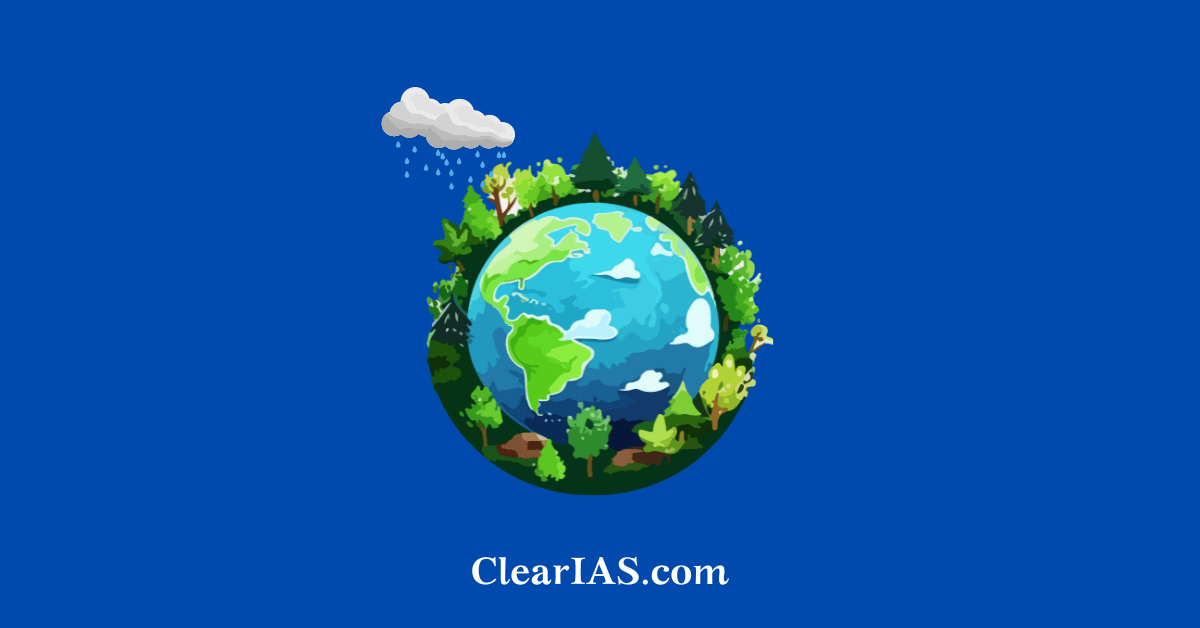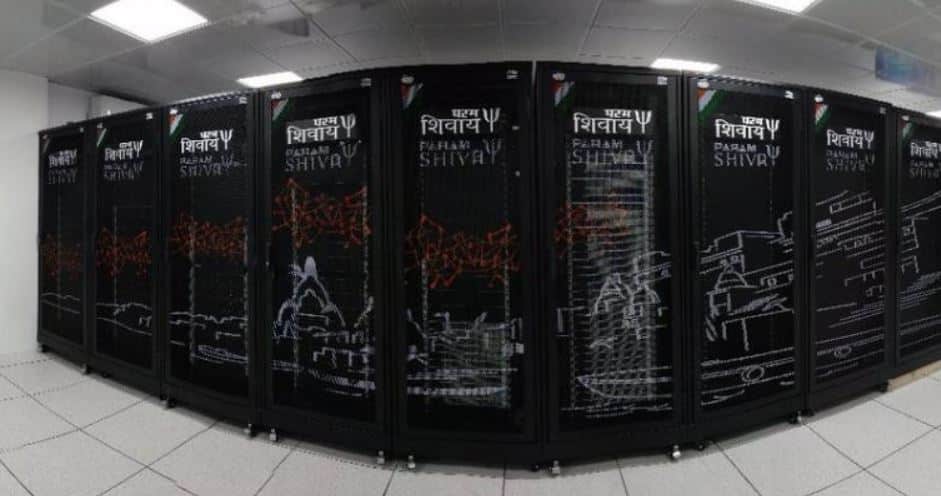Table of Contents
What are the General Issues on Environmental Ecology, Biodiversity, and Climate Change?
Before diving into the topic, let’s first understand some key terms – Environmental Ecology, Biodiversity, and Climate Change.
What is Environmental Ecology?
Ecology is the scientific study of the relationships between living organisms and their environments. Environmental ecology is a specific branch of ecology that focuses on the study of how organisms interact with and respond to their physical environment. It seeks to understand how environmental factors influence the distribution and behavior of living organisms in natural and human-altered landscapes.
What is Biodiversity?
Biodiversity refers to the variety of life on Earth. It can be understood at several levels:
- Species Diversity: This refers to the variety of different species in a particular area or on the entire planet. A diverse range of species is important for ecosystem stability and resilience.
- Genetic Diversity: This focuses on the genetic variation within species. It’s crucial for adaptability to changing environmental conditions and for breeding programs in agriculture and conservation.
- Ecosystem Diversity: This looks at the variety of ecosystems and their interactions in a region. Ecosystem diversity supports various ecological functions and services.
What is Climate Change?
Climate change refers to long-term alterations in average weather patterns and conditions on Earth. It can manifest as both natural variations and human-induced alterations to the Earth’s climate system. Human activities, such as burning fossil fuels and deforestation, have become significant drivers of climate change.
General Issues on Environmental Ecology, Biodiversity, and Climate Change
The world is facing a complex web of challenges as environmental ecology, biodiversity, and climate change converge. These issues are interrelated and require urgent global action to address them effectively.
Environmental Ecology: Understanding Our Ecosystems
Environmental ecology studies the relationships between living organisms and their surrounding environments. However, human activities have disrupted this balance in several ways:
Habitat Destruction:
Urbanization, deforestation, and industrialization have led to the destruction of natural habitats, disrupting ecosystems and threatening species with extinction.
Pollution:
Pollution from industries, agriculture, and transportation has contaminated air, water, and soil, harming wildlife and endangering human health.
Over-exploitation:
Overfishing, hunting, and resource extraction have pushed many species to the brink of extinction and depleted vital ecosystems.
Overall, these disruptions hinder the balance of life on Earth and have far-reaching consequences.
Biodiversity: The Web of Life
Biodiversity is crucial for maintaining the health and resilience of ecosystems. However, it is facing severe threats:
Mass Extinctions:
Human activities have accelerated the rate of species extinction, leading to the sixth mass extinction event in Earth’s history.
Invasive Species:
The introduction of non-native species disrupts ecosystems and often outcompetes native species.
Genetic Erosion:
The loss of genetic diversity within species reduces their ability to adapt to changing conditions.
To preserve biodiversity, it is essential to take immediate action to protect species and ecosystems.
Climate Change: The Looming Crisis
Climate change, driven by human activities, has profound consequences:
Rising Global Temperatures:
The Earth’s average surface temperature has been steadily increasing, leading to various far-reaching effects.
Melting Ice and Rising Sea Levels:
As global temperatures rise, glaciers and polar ice caps are melting, threatening coastal communities and low-lying areas.
Extreme Weather Events:
Climate change contributes to more frequent and severe weather events, including hurricanes, heatwaves, droughts, floods, and wildfires.
Ocean Acidification:
Increased CO2 levels in the atmosphere lead to higher CO2 concentrations in the world’s oceans, causing ocean acidification and harming marine ecosystems.
Shifts in Climate Patterns:
Climate change can disrupt long-term climate patterns, affecting agriculture, water resources, and ecosystems.
Impacts on Biodiversity:
Changing climates force species to adapt, migrate, or face extinction as their habitats shift or become inhospitable.
These consequences highlight the urgent need to mitigate climate change and reduce greenhouse gas emissions.
The Interconnectedness of the Issues
The general issues of environmental ecology, biodiversity, and climate change are interconnected:
- Deforestation contributes to both habitat destruction and climate change. The loss of forests reduces the planet’s capacity to absorb carbon dioxide, exacerbating global warming.
- Climate change can affect biodiversity by altering habitats and migration patterns of species.
Recognizing these interconnections is crucial for developing effective strategies to address these issues.
The Call for Global Action
To tackle these challenges, collective and immediate action is required on multiple fronts:
- Conservation Efforts: Protecting and restoring natural habitats, implementing sustainable practices in agriculture and fisheries, and combating pollution are vital for preserving biodiversity and mitigating climate change.
- Renewable Energy Transition: Shifting from fossil fuels to renewable energy sources like solar and wind power is essential to reduce greenhouse gas emissions.
- International Cooperation: Climate agreements and conservation initiatives exemplify the importance of global collaboration in addressing these issues.
Conclusion
Environmental ecology, biodiversity, and climate change are intertwined challenges that require immediate attention and action. Inaction can have severe repercussions for our planet’s ecosystems, species, and future generations. By understanding the interconnectedness of these issues and taking decisive action to protect the environment, preserve biodiversity, and mitigate climate change, we can work towards a more harmonious and resilient planet.
Mutiple Choice Questions
1. What is the definition of environmental ecology?
a) The study of living organisms and their environments
b) The study of how organisms interact with their physical environment
c) The study of climate change and its effects on ecosystems
d) The study of genetic diversity within species
Explanation: Environmental ecology is a specific branch of ecology that focuses on the study of how organisms interact with and respond to their physical environment, including the effects of human activities on ecosystems.
2. What is the definition of biodiversity?
a) The variety of life on Earth
b) The study of relationships between living organisms and their environments
c) The variety of different species in a particular area
d) The study of genetic diversity within species
Explanation: Biodiversity refers to the variety of life on Earth and can be understood at several levels, including species diversity, genetic diversity, and ecosystem diversity.
3. What is the definition of climate change?
a) Long-term alterations in the average weather patterns and conditions on Earth
b) Natural variations in the Earth’s climate system
c) The burning of fossil fuels and its effects on the atmosphere
d) Changes in temperature, precipitation, wind patterns, and other climatic factors
Explanation: Climate change refers to long-term alterations in the average weather patterns and conditions on Earth, including shifts in temperature, precipitation, wind patterns, and other climatic factors over an extended period.
4. What are the primary components of climate change?
a) Natural climate change and human-induced climate change
b) Rising global temperatures and melting ice caps
c) Climate patterns and extreme weather events
d) Genetic diversity and ecosystem diversity
Explanation: The primary components of climate change are natural climate change, which has occurred throughout Earth’s history, and human-induced climate change, which is driven by human activities such as the burning of fossil fuels.
5. How does habitat destruction affect ecosystems?
a) It increases biodiversity
b) It decreases species richness
c) It improves ecosystem stability
d) It has no impact on ecosystems
Explanation: Habitat destruction, caused by urbanization, deforestation, and industrialization, disrupts ecosystems and threatens countless species with extinction.
6. What is one benefit of biodiversity to humanity?
a) Increased pollution levels
b) Improved agricultural practices
c) Decreased species richness
d) Reduced genetic diversity
Explanation: Biodiversity provides numerous benefits to humanity, such as clean air and water, food security, and medicines.
7. How does climate change affect biodiversity?
a) It increases species richness
b) It has no impact on biodiversity
c) It alters habitats and migration patterns
d) It improves genetic diversity
Explanation: Climate change can force species to adapt, migrate, or face extinction as their habitats shift or become inhospitable.
8. What are the consequences of rising global temperatures?
a) More frequent and severe weather events
b) Melting ice caps and rising sea levels
c) Ocean acidification
d) All of the above
Explanation: Rising global temperatures have numerous consequences, including more frequent and severe weather events, melting ice caps and rising sea levels, and ocean acidification.
9. What can be done to address the general issues of environmental ecology, biodiversity, and climate change?
a) Protecting and restoring natural habitats
b) Shifting to renewable energy sources
c) Implementing sustainable practices in agriculture and fisheries
d) All of the above
Explanation: Addressing these issues requires collective and immediate action, including protecting and restoring natural habitats, shifting to renewable energy sources, and implementing sustainable practices in agriculture and fisheries.
10. Why is global cooperation important in addressing these issues?
a) It increases competition between countries
b) It facilitates the sharing of knowledge and resources
c) It slows down progress in addressing the issues
d) It is not necessary for finding solutions
Explanation: Global cooperation, as demonstrated through climate agreements and conservation initiatives, is essential for addressing these interconnected issues, facilitating the sharing of knowledge and resources to find solutions.
Brief Summary | UPSC – IAS
The article discusses the general issues surrounding environmental ecology, biodiversity, and climate change. Environmental ecology focuses on the study of how organisms interact with and respond to their physical environment, while biodiversity refers to the variety of life on Earth. Climate change is the long-term alteration of average weather patterns and conditions caused by natural variations and human activities. These issues are interconnected, with habitat destruction, pollution, and over-exploitation contributing to biodiversity loss and climate change. Global action is needed through conservation efforts, renewable energy transition, and international cooperation to address these challenges and protect the planet’s ecosystems and future generations.











